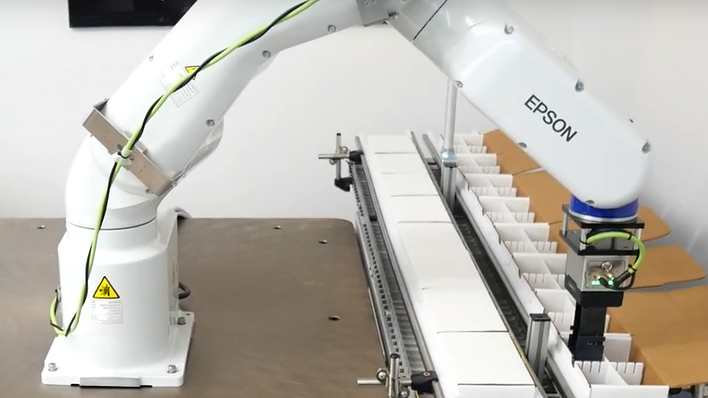According to Deloitte, customer experience measures how customers feel about a company in general, and includes the emotional, physical, and psychological connection they establish with a brand. We’re not talking about a one-way interaction, but one that includes the customer’s entire lifecycle and all the touch points the customer has with a product or service.
CX is important to a business because it is a determining factor in gaining or not gaining a customer’s loyalty. In fact, 60% of customers are willing to pay for a better experience. In addition, organizations that invest in providing a better customer experience are more likely to see a 70% increase in their revenue over three years.
When done the right way, CX benefits customers as follows:
- They get what they really want (not what they think they need).
- It caters to customers rather than just processes them — a culture of service is much more effective than just meeting needs, as well as treating customers as human and not just as numbers in a spreadsheet.
- It allows the staff to provide the ideal customer experience.
One way to achieve this is through the use of emerging technologies, which have an unlimited potential to deliver an experience that really impresses your customers, with personalized and contextualized interaction as a reference. Emerging technologies are possible only when enterprises master basic technologies, especially when it comes to applying them to the customer experience.
In order to implement emerging technologies such as augmented reality (AR), AI/ML, and blockchain, fundamental technologies such as cloud, data analytics and application integration are now needed. That said, let’s review the five emerging technologies that are redefining the customer experience.
Augmented reality
While augmented reality (AR) isn’t new, your app is gaining popularity, especially in the customer experience. With the emergence of RA experiences for iOS or Android, brands can offer customers interactive experiences that are able to change the way they access products and imagine how they can adapt to their everyday lives. This is particularly useful for stores; customers don’t have to go to the establishment to test a product and make a purchase decision.
An example of this is the Pottery Barn furniture store, which offers an RA app for its Pottery Barn and PBteen brands, which allows users to take the items and integrate them into a room to see what they look like with the furniture and décor they already have.
They can also completely empty a room and start the design process from scratch, and from the app, buyers can purchase the items they like. RA is not limited to one app, it can offer customers an enhanced in-store experience.
Beauty products brand CoverGirl, for example, opened its main store with a makeup station with RA where shoppers can try a range of products virtually.
Voice capabilities
We’re all familiar with voice capabilities, from Apple’s Siri to Amazon’s Alexa. According to a recent survey of 500 IT decision makers, 28% of companies have already adopted voice capabilities to improve the customer experience, while another 57% are planning to implement them next year. In addition, 88% of respondents believe that voice technology will give them a competitive advantage when it comes to the customer experience.
Currently, there are two important use cases for voice technology. The first is a fully immersive voice experience that offers interaction and entertainment. An example is what Johnnie Walker is doing on Amazon’s Alexa. Users can ask Alexa to “open Johnnie Walker” to access information about whiskey, cocktail recipes and more.
The second is a functionality that uses data and an audible response to make it easier for a user to do or make it more efficient. TV remotes are an example, whereby you can talk to your device to access a program instead of having to navigate channels.
Screens built into a car
If you have a new car, it is very likely that it has a screen with features like Apple’s CarPlay, which offers users all the features of their phone at the touch of a button.
With an estimated 10 million self-driving cars expected to be in circulation for next year, demand for in-car entertainment and on-demand services will be on the rise.
GM, for example, already allows customers to order coffee from their vehicles using the screens integrated into the dashboards. Its users have access to Marketplace, a trading platform that allows you to make reservations and purchase products and services from brands such as Starbucks, Shell, Dunkin’ Donuts, TGI Fridays and many others.
AI / ML
We couldn’t talk about emerging technologies without mentioning artificial intelligence (AI) and machine learning (ML). While we can currently find these technologies everywhere, AI will give companies an advantage in the future in terms of customer experience. AI and machine learning have been a priority for businesses for several years, while customer-service chatbots have recently reached a high level of maturity.
There is no e-commerce website today that does not welcome you at the time you enter your home page. Businesses apply AI/ML in several use cases in an attempt to get to know their customers even better. An example is to use AI in customer-path-focused strategies, whereby it is used to predict where the funnel is located and better serve it with the right message at the right time.
Another area where it has potential? Facial recognition. It helps identify a customer as soon as he or she enters the store so the customer can get personalized offers instantly.
In addition, AI can be specifically designed to help resolve and more quickly identify customer-service issues, and help the sales team identify new opportunities to sell products and attract customers. AI can be an important tool to help everyone do their jobs better, and create new business opportunities.
Blockchain
Of all the technologies mentioned, blockchain is making the most significant advances in research and development, as well as in maturity.
According to a Juniper Research Study, 65% of companies with more than 10,000 employees are considering or actively participating in the implementation of blockchain.
Some U.S. states are now approving their expense control using blockchain technology, creating a digital audit log. In addition, companies are beginning to consider blockchain to create micropayments.
This can benefit companies with small transaction values that face high costs of transactions made through electronic payment systems; micropayments made using a digital currency offer them an alternative.
Finally, blockchain can be used in the health sector, resulting in significant savings. Providers are using it to manage electronic medical records and manage patient data with transparency, as well as provide visibility into the drug-supply chain.
More and more customers are putting emphasis on the customer experience, and it is up to companies to offer it effectively.
The customer experience is the way to get consumers back and earn their loyalty. While it’s a multifaceted process, emerging technologies are a step businesses can take to help them provide customers with the ideal experience.
This article was from CENFENG and was legally licensed through the NewsCred publisher network. Please direct all licensing questions to legal@newscred.com.
![]()



